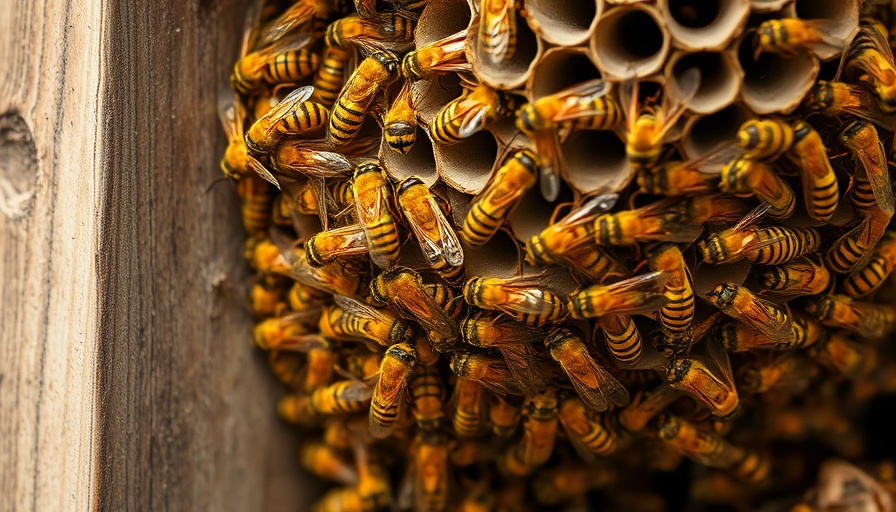
Understanding Yellow Jackets: The Little Pests in Our Backyard
For many homeowners, summer is synonymous with backyard barbecues, outdoor gatherings, and lush greenery. Yet, lurking in the shadows are those notorious yellow jackets. These buzzing insects are more than just a nuisance; they are perennial threats to the joy of outdoor living. Known for their painful stings and aggressive behavior, yellow jackets can ruin summer fun in the blink of an eye. Understanding yellow jackets is the first step in managing them effectively.
Why Yellow Jackets Are Attracted to Your Home
So, what do these yellow coat-wearing pests find so alluring about your yard? Their attraction typically stems from the availability of food and shelter. Yellow jackets are particularly fond of protein-rich foods and sugary substances, making picnic leftovers and open trash bins prime targets. If you're wondering how to get rid of yellow jackets, knowing what draws them in is pivotal. It's not just the food; structural vulnerabilities, such as nests hidden in wall cavities or attics, can also entice these pesky invaders to make themselves at home.
Effective Strategies for Yellow Jacket Management
When it comes to dealing with yellow jackets, there are several approaches homeowners can consider. Some strategies emphasize prevention, while others focus on eradication.
1. Keeping the Environment Clean
Perhaps the easiest yet most effective method to deter yellow jackets is to maintain a clean outdoor environment. Ensure that food remnants are removed promptly, trash cans are secured with tight-fitting lids, and compost bins are managed carefully. Even a leftover drop of barbecue sauce can lead to a swarm!
2. Home Remedies for Yellow Jacket Traps
If you already have an infestation, creating DIY traps can be an innovative and budget-friendly solution. One popular method involves using a two-liter bottle, cutting off the top, and inverting it back into the bottle, filled with a mixture of sugar water and vinegar. This sweet concoction attracts the yellow jackets, while the inverted top traps them inside.
3. When To Call in Professionals
In cases of a significant infestation or when nests are located in hard-to-reach areas, it may be time to call in the professionals. Pest control services are adept at handling yellow jacket removal safely and efficiently, often employing tools and techniques unavailable to the average homeowner.
The Importance of Safety: Protecting Yourself and Your Family
While removing yellow jackets seems straightforward, safety should always be a top priority. Yellow jackets can be aggressive, especially if they perceive a threat to their nest. Wearing protective clothing and avoiding sudden movements can minimize the risk of getting stung. If managing them seems daunting, do not hesitate to reach out for expert help.
The Future of Yellow Jacket Management: Innovative Solutions
With increased awareness of sustainability and eco-friendly pest control, the future offers exciting developments. Innovations like natural insect repellents and eco-friendly traps are emerging as viable options for environmentally conscious homeowners, proving that we can coexist with nature without becoming its victim.
In conclusion, dealing with yellow jackets doesn’t have to spoil your slice of summer paradise. By understanding their behaviors, being proactive, and employing practical solutions, you can reclaim your outdoor space. Make these little pests a thing of the past, and dive into a season of fun and relaxation!
Feeling overwhelmed by yellow jackets? Don’t hesitate to seek help from experts to reclaim your outdoor space and fully enjoy summer weekends without the buzzing annoyance!
 Add Row
Add Row  Add
Add 



Write A Comment